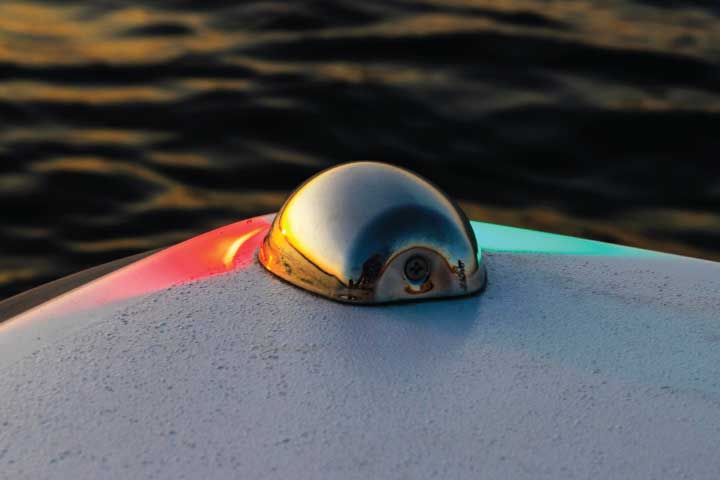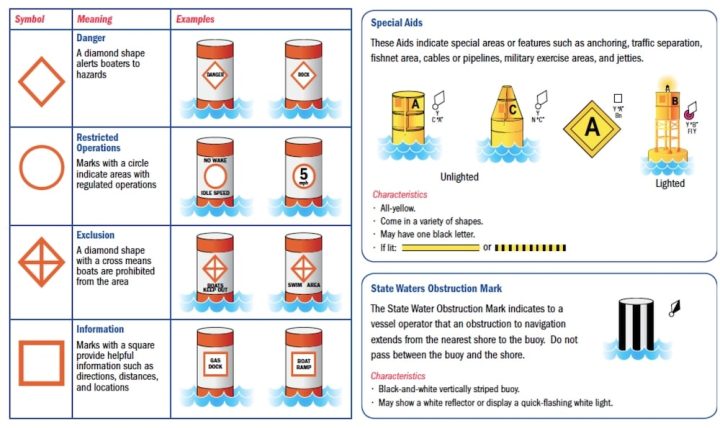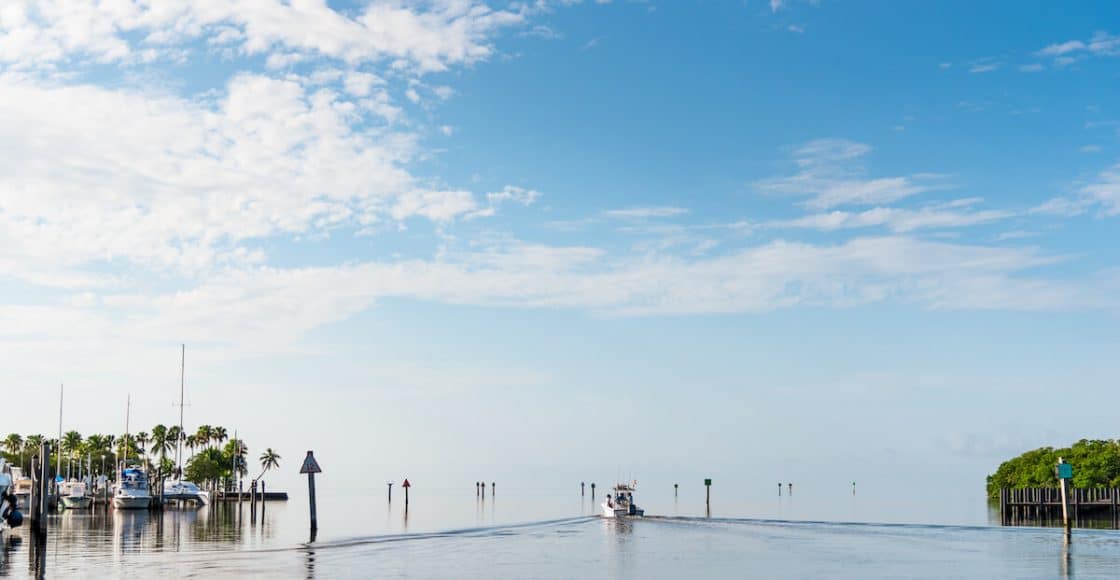Channel Markers & Navigation Aids: 3 Types of Buoys
Last Updated on February 24, 2023 by Boatsetter Team
Almost 72 percent of the Earth is covered in water, making it seem like a boater’s paradise where sailors and powerboaters alike can climb onboard their vessel and head for the open seas without a care.
Although there is a lot of water sloshing around on this planet, much of it is covering places too rocky, too shallow, or too dangerous which makes it extremely important that navigational aids show boaters where to go and what to avoid.
In every place, unseen obstructions and dangers exist below the water’s surface, making it important to understand the different types of buoys and markers that indicate where captains can find the underwater “roads and trails” that safely lead back home.
A wide variety of navigational aids, often referred to as buoys or channel markers, exists to protect boaters, property owners, and the environment, and help boaters find their way around.
Already Own a Boat? Earn an Average of $20K/season by Renting it Out on Boatsetter
Types of Channel Markers
Whether created by man or nature, the channels that provide deep water paths and help boaters get home with propellers intact must be clearly marked so vessel operators can tell where safe passage can be found.
Channel markers can be unlit triangular and square shapes perched on top of sticks, or well-lit red and green steel buoys anchored in place to keep captains from wandering into the rocks or mud.
The most important details boaters should learn about channel markers is how to understand what they are telling you.
- Yes, the old adage “Red, Right, Return” is accurate, but only if you understand the meaning of the word “return.”
- At the mouth of a harbor or port, the start of the channel will be clearly marked with a red and green buoy. If you are returning to port, the red buoy should be kept on your right, thus – RED on the RIGHT means you are RETURNING.
- The opposite is true if you are headed out to sea. While leaving, keep the red on your left.
- Once in the channel, there will be many places where only one marker is visible. Coming in from sea, a captain might pass a red marker on his right with no green on the left. Looking ahead, a green marker might be visible several hundred yards ahead.
By keeping the vessel between the markers and alternating red-right and green-left, the captain can stay in the channel and return safely to their home slip.

Navigation Lights
Whether found on a boat or on a marker or buoy, lights provide important navigation information to boaters returning to port in the dark.
Like channel markers, the red and green lights on top of buoys and larger markers tell captains how to find the channel and keep the vessel safely in deep water.
- Like channel markers, red on the right means you are returning to your home port.
- At the entrance to a channel, both red and green will be visible, while further up the channel, only one or the other may be present.
By paying close attention, keeping a single red on your right (while returning) means you should look for a green light next and keep it on your left—even if it is once again paired with a red.
Learn more by reading Boat Navigation Lights: Understanding the Basics.

Graphic Courtesy of U.S. Coast Guard
Buoys and Other Boating Regulatory Markers
To protect other boaters, their property, and the environment, boating regulatory zones were created for different purposes. The boundaries around these zones are defined with white markers with orange shapes, such as a circle or diamond, and are used to inform boaters of no wake zones, exclusion zones, or speed limits.
- A white marker with an orange circle is used to inform boaters of no wake zones, slow speed zones, or other important information.
- White markers with an orange diamond shape are used to tell boaters of hazardous conditions such as submerged objects, rocks, and other dangers.
- White markers with crossed diamond shapes are used to keep boaters out of dangerous spots such as that great fishing hole that’s a little too close to the dam or waterfall, or an area where boating would present a danger to others, such as in a swimming area.
- Other navigation markers for boats provide important safety or directional info, such as red and white flags alerting others that divers are in the water.
It is important to learn how to properly read and understand navigational aids before hitting the water. Like street signs, markers and other navigational aids provide boaters with important safety and directional info to help get them safely home.
Ready to Go Boating? Browse Available Boat Rentals Near You
Boatsetter is a unique boat-sharing platform that gives everyone — whether you own a boat or you’re just renting — the chance to experience life on the water. You can list a boat, book a boat, or make money as a captain.

Chuck Warren fell in love with boats at 9 years old while helping to restore his grandfather’s 1939 44-foot Elco cruiser. A lifelong boater, Chuck has experience operating large and small vessels on the waters of the Atlantic, Gulf of Mexico, Caribbean, and the Great Lakes.
During his 35-year marine industry career, Chuck has been the driver for several offshore powerboat racing teams, the chief engineer aboard a Caribbean research and salvage vessel, captain of a Florida Keys sunset cruise, and more.
Today, Chuck is a boating industry writer, copywriter, and captain who lives on his 40-foot boat in the summer when he isn’t delivering vessels around the Great Lakes or teaching new boaters to drive. Winters are split between the West Michigan lakeshore and wherever his travels take him.










